When the 10-day long festivities of Ganesh Chaturthi in Western India become Vinayaka Chaturthi down South India, the most loved sweet of Bhagwan Ganpati, the modak, also becomes the South Indian variation Kozhukattai (or Kolukattai). Most popular in Tamil Nadu and Kerala, Kozhukattai recipe is also steamed dumplings of rice flour dough stuffed with a sweet mixture of coconut and jaggery. One can also find some more variations of this traditional sweet with unique stuffings or fillings.
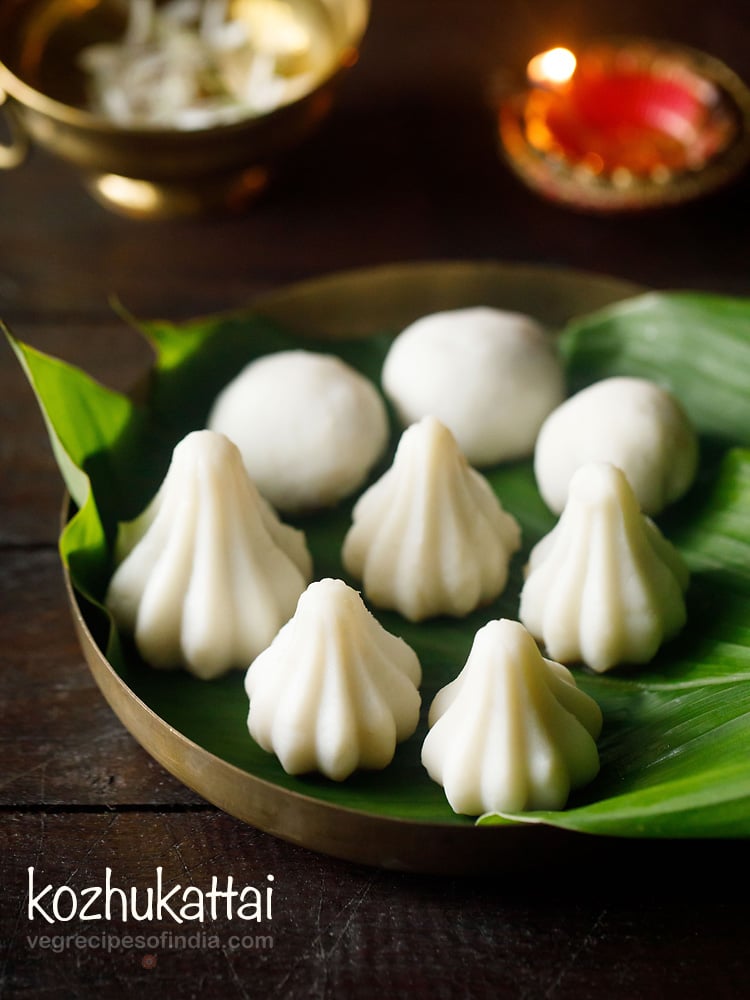
About Kozhukattai
Although different types of modak can be associated with Ganesh Chaturthi, one of the most quintessential ones offered to Lord Ganesha will always be the traditional steamed Modak from the western Indian state of Maharashtra.
The method and process of making the Kozhukattai is also similar as that of this typical modak.
However, the one thing that makes the Kozhukattai (or Kolukattai) recipe distinct than its counterpart is the stuffing. The basic stuffing mixture for both is the same, that is, fresh coconut and jaggery.
It is the addition of poppy seeds/sesame seeds and ground nutmeg powder in the original modak that makes the difference.
But there’s another Kozhukattai recipe known as the Ellu Kozhukattai which has a filling of jaggery and sesame seeds. This traditional recipe of Kozhukattai made with coconut is also known as Thengai Poorna Kozhukattai.
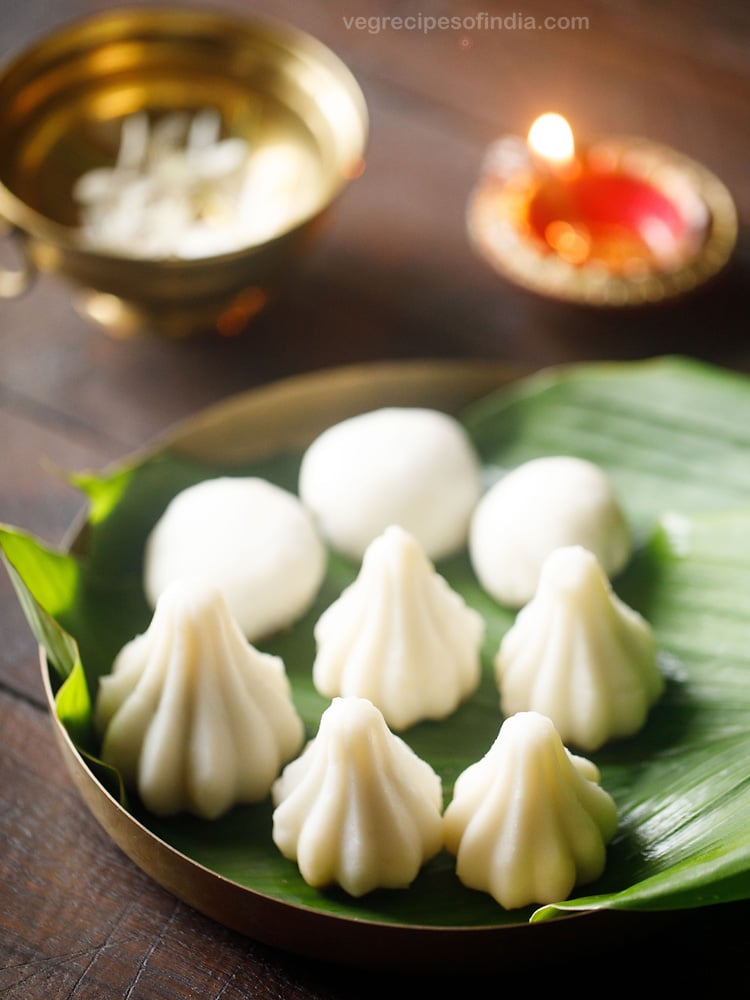
While the steamed way of making is considered to be the most authentic one, there are other ways where you can make different versions of modaks.
For instance, you also have the Fried Modak or various flavored mixtures that are just shaped into modaks, for some fancy variations. Like the Chocolate Modak, Mawa Modak, Mango Modak, etc.
In addition to being served as a naivedhyam, Kolukattai can also be made and enjoyed as a snack. When making for the Ganesh or any other festival, make sure to not taste while preparing these.
Also, use fresh ingredients within their shelf life and make these sweets with a devotional state of mind and heart.
Shaping Kolukattai
With the Kozhukattai recipe, you can shape the sweets in fluted petal form or even a stuffed round ball form. These can also be made in the shape of half-moon, similar to that of sweet somas or Karanji (gujia, karchikai or kajjikayalu).
To shape the Kolukattai in a fluted way with hands, does take some practice and experience. So, if you are someone who’s new to cooking or are a novice, then opt to make the round or karchikai shaped Kolukattai. You can use the moulds too for shaping these, which are easily available in the market.
Here, in this Kozhukattai recipe, I have demonstrated 2 methods:
- One, where you shape the sweets in a round shape.
- Second, where you use the moulds to shape these sweets.
Personally, I prefer to use the moulds as the shaping is faster with them versus shaping with hand. You can always choose to do what suits you the best.
How to make Kozhukattai
Make Sweet Stuffing
1. In a heavy kadai (wok) or a frying pan, take 1.5 cups grated fresh coconut and 1 cup jaggery powder or grated jaggery.
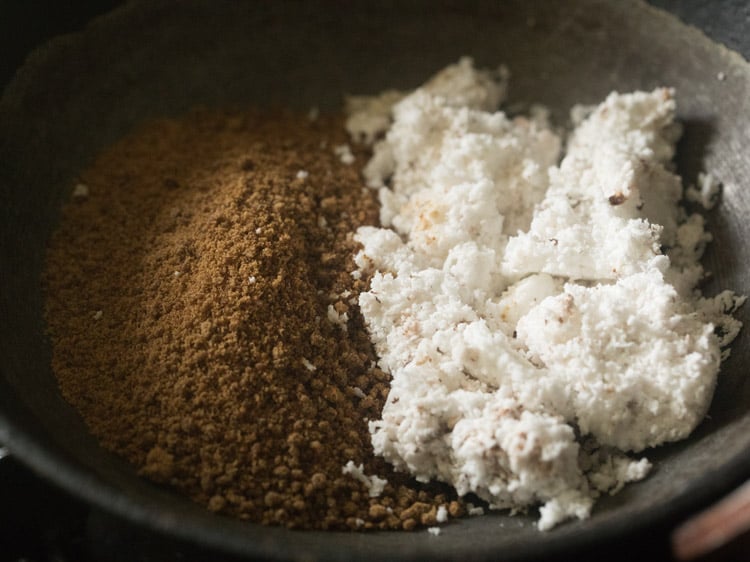
2. Keep the wok or frying pan on a medium-low heat and mix the coconut with the jaggery.
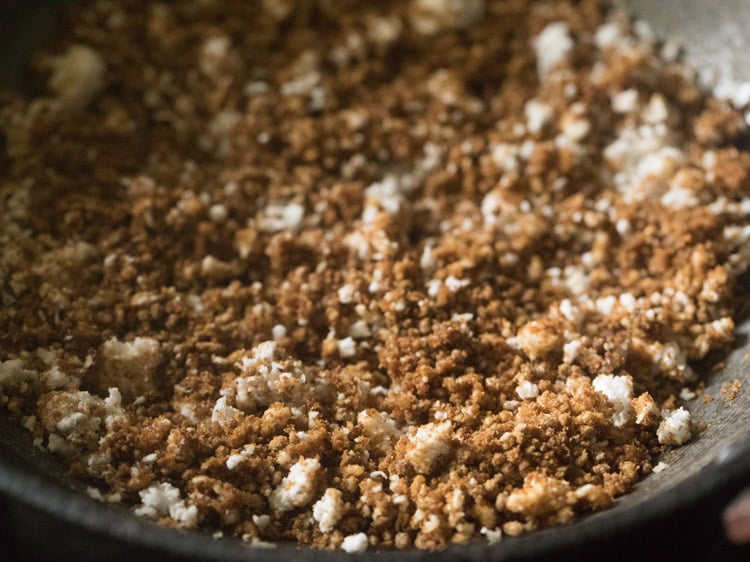
3. Then, add ½ teaspoon ghee or oil.
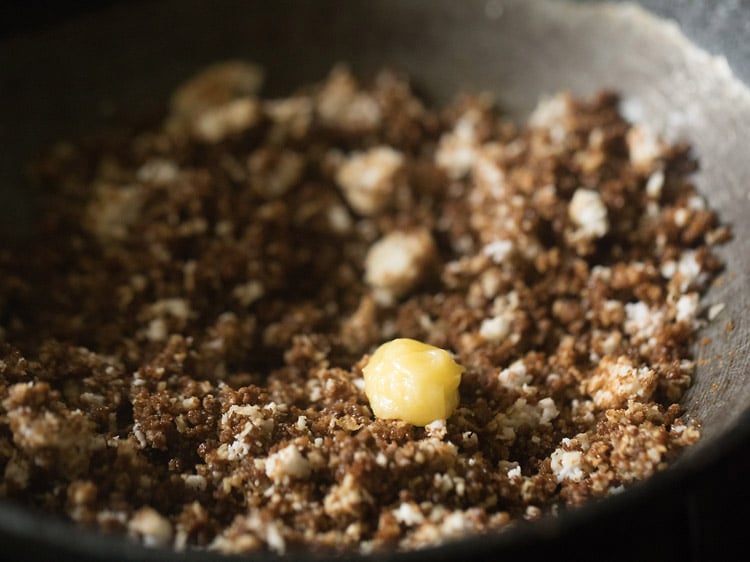
4. Stir often and cook this coconut-jaggery mixture on low to medium-low heat.
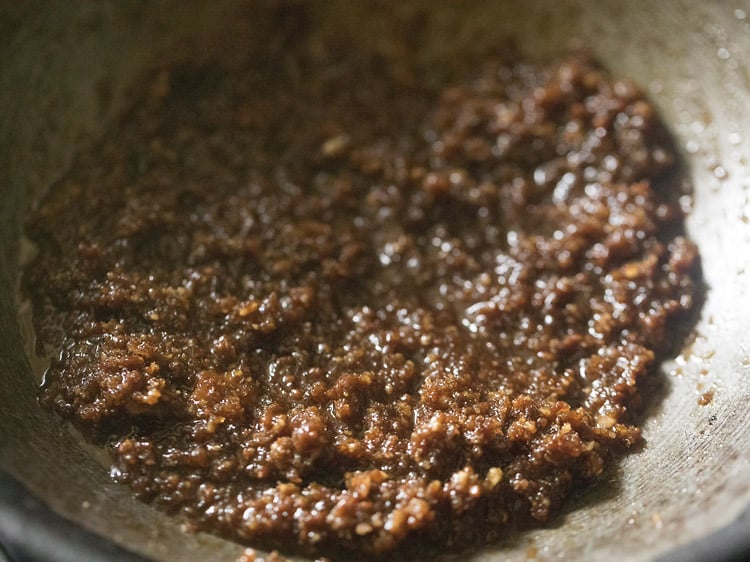
5. The jaggery will begin to melt first.
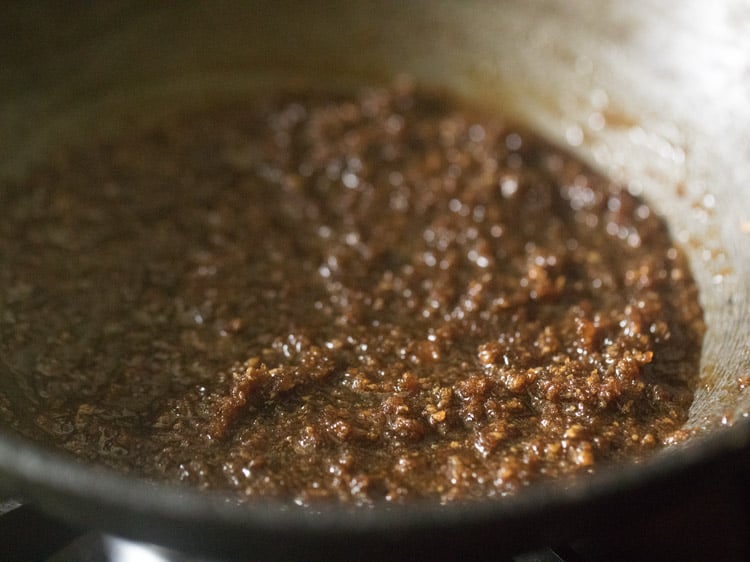
6. Continue to cook, stirring often.
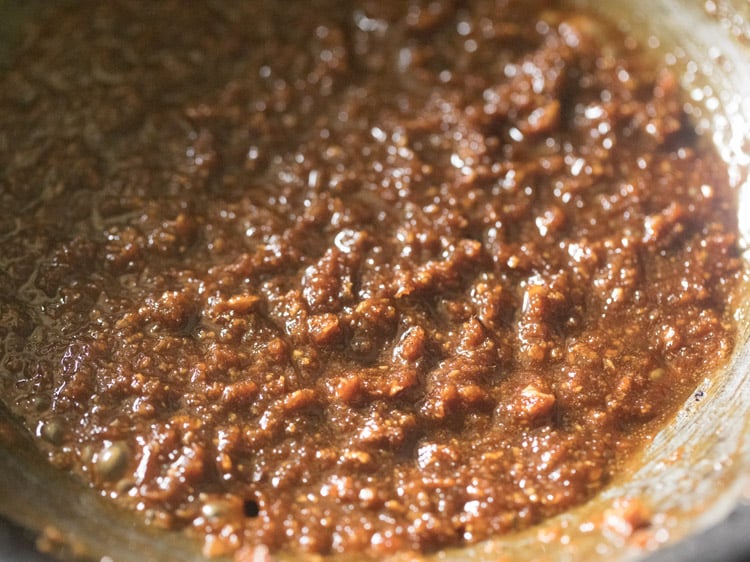
7. Add ½ teaspoon cardamom powder and mix well.
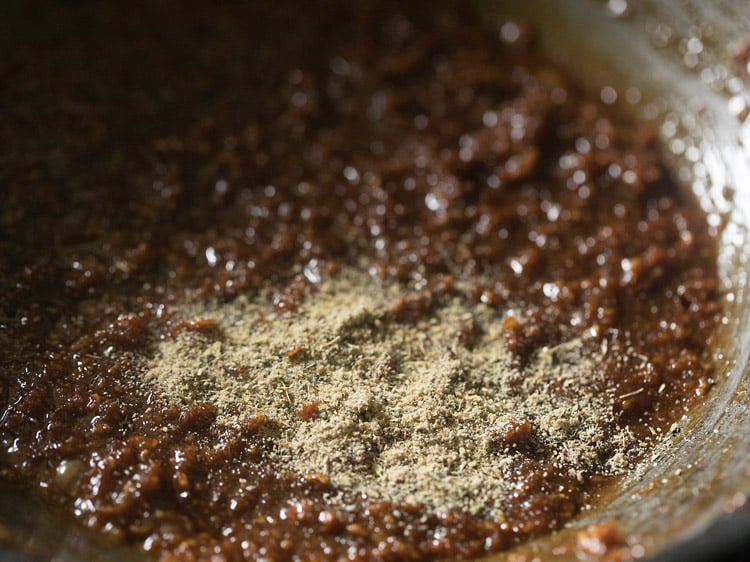
8. Cook the coconut-jaggery mixture till the moisture from the jaggery begins to dry. Then, switch off the heat. Do not overcook as then the jaggery will harden. Keep this coconut-jaggery stuffing aside.
On cooling, the mixture will thicken more. To get rid of any excess moisture in the filling, you can add a bit of rice flour. Adding rice flour helps to absorb moisture in the stuffing. Keep aside to cool.
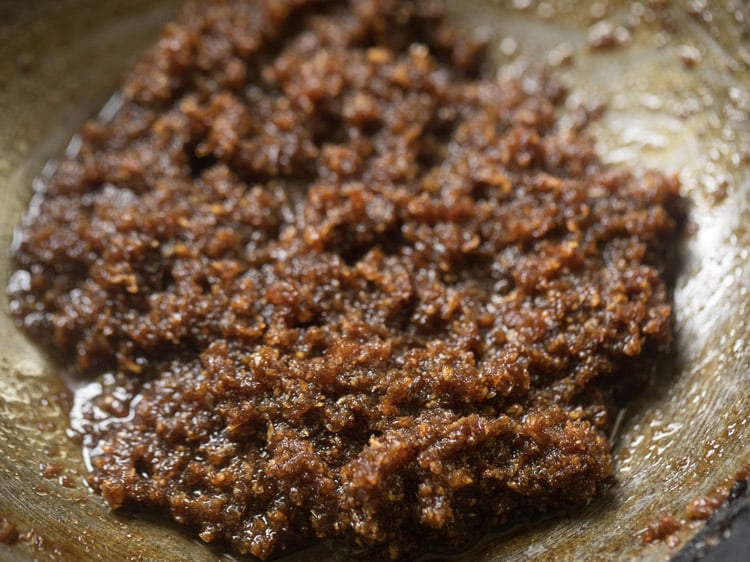
Prepare Rice Dough
9. In another kadai or pan, take 1.5 cups water. Add ¼ teaspoon ghee or oil. Place the pan on a stovetop on medium to high heat.
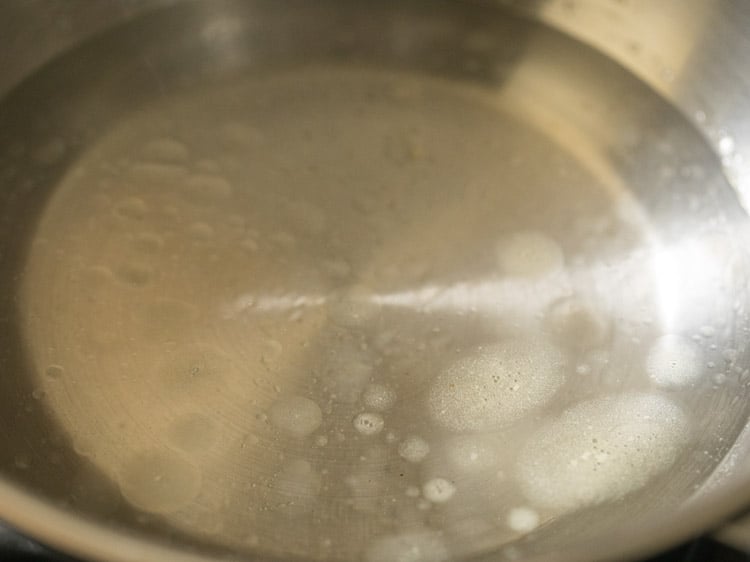
10. Add ¼ teaspoon salt.
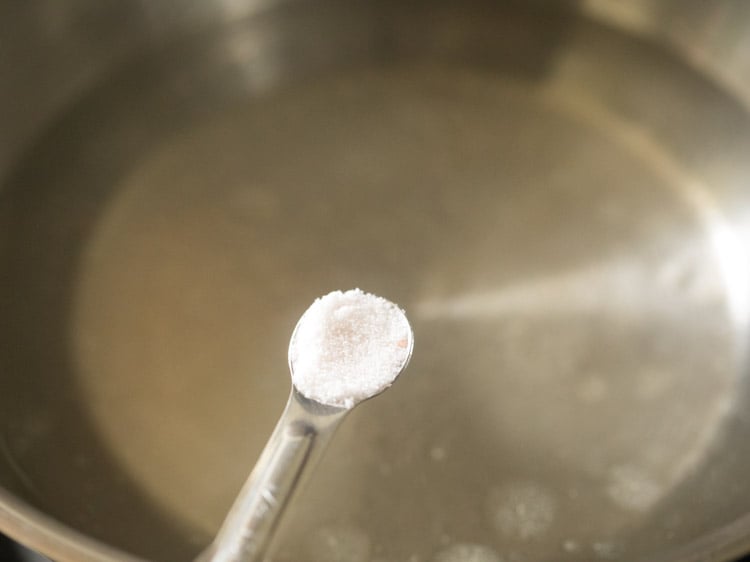
11. Let the water come to a rolling boil.
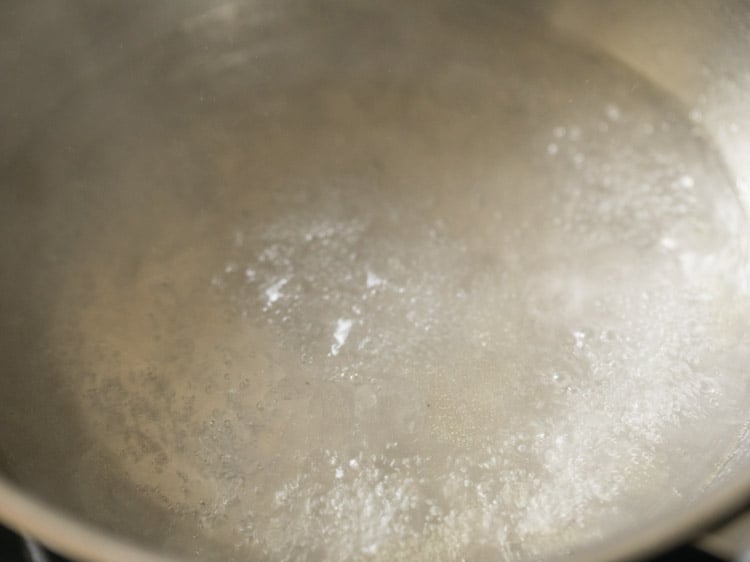
12. Reduce the heat to low and add 1 cup rice flour, gradually.
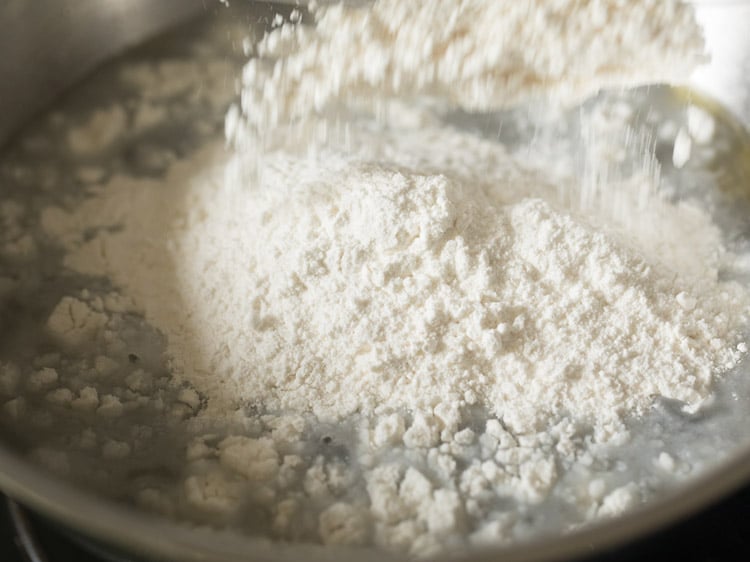
13. Quickly begin to stir and mix all the rice flour with the water.
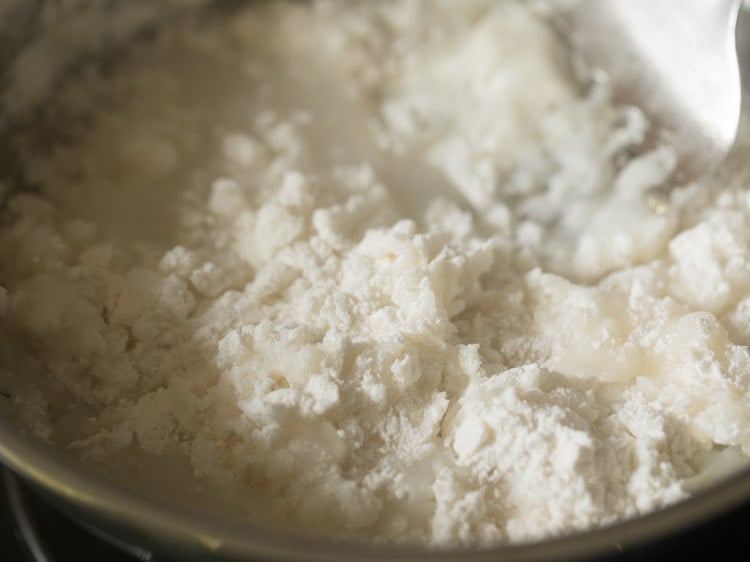
14. Stir till all the rice flour is mixed with the water. Mix very well and switch off the heat.
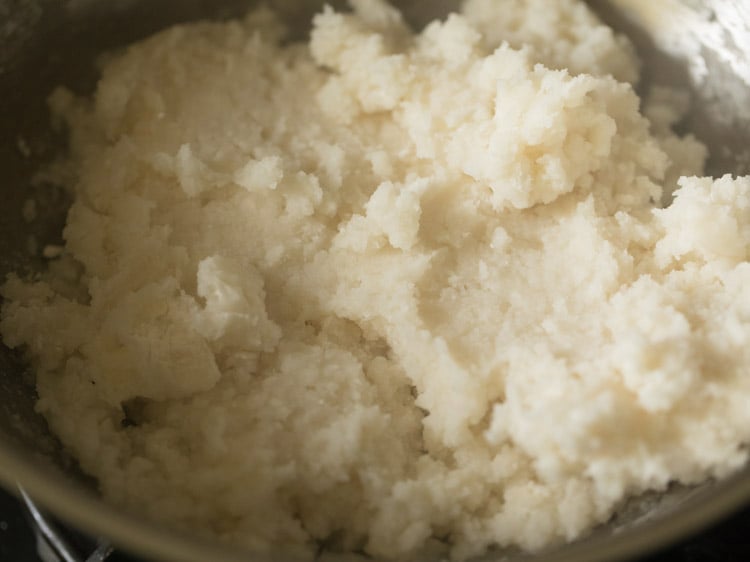
15. Remove the pan from the stovetop. Cover with a lid and keep for 4 to 5 minutes.
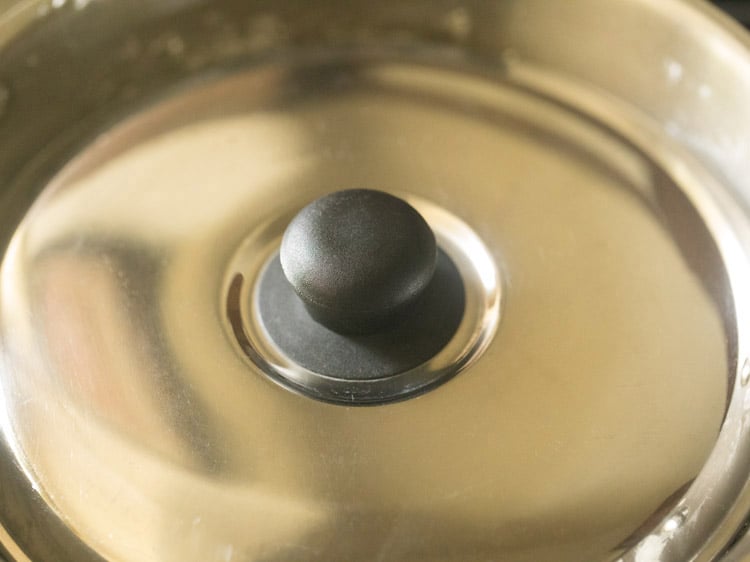
16. After 4 to 5 minutes, remove the lid. Check the hotness of the rice dough by touching it with clean fingers.
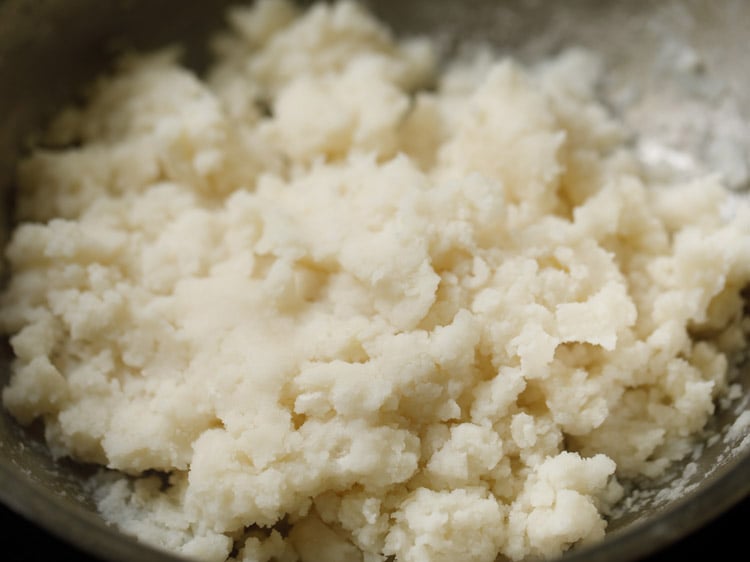
17. If the dough is warm or slightly hot, begin to knead it. Take care not to burn your fingers. You can also place the dough in a tray or a plate and then knead.
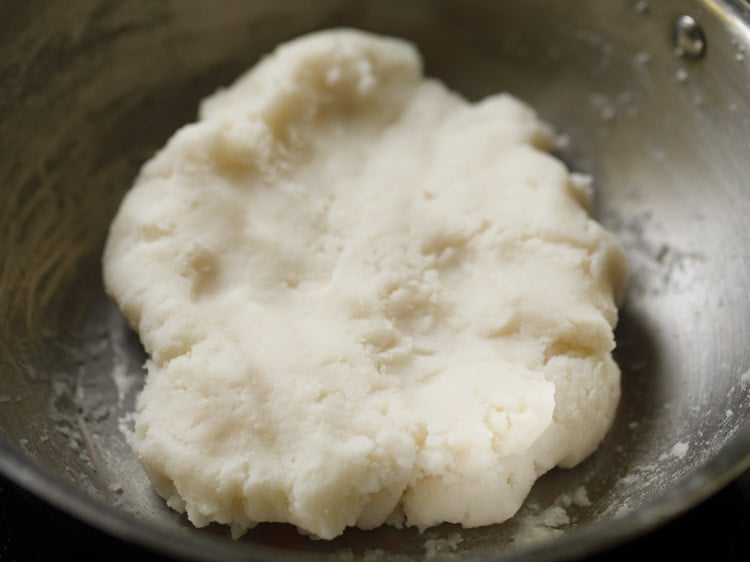
18. Knead to a smooth and soft dough. Then, cover with a damp muslin or cotton cloth. Allow the dough to rest for 10 to 12 minutes.
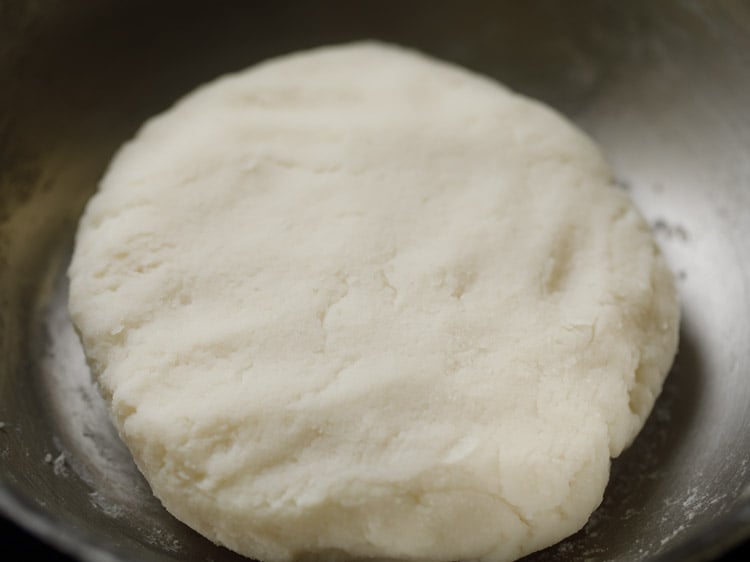
19. Make small balls from the dough. The rice dough balls should be smooth. Some may get cracks. So, just rub a bit of water on your palm and shape them into balls again to get rid of the cracks
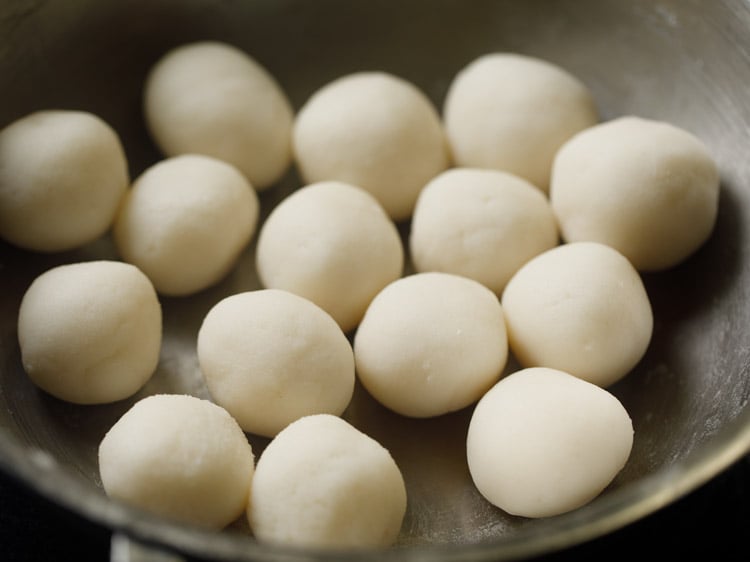
Prepare Kozhukattai
Make Round Kozhukattai
20. Take the dough ball and gently flatten it with your fingers. Keep the edges thin and the center slightly thick.
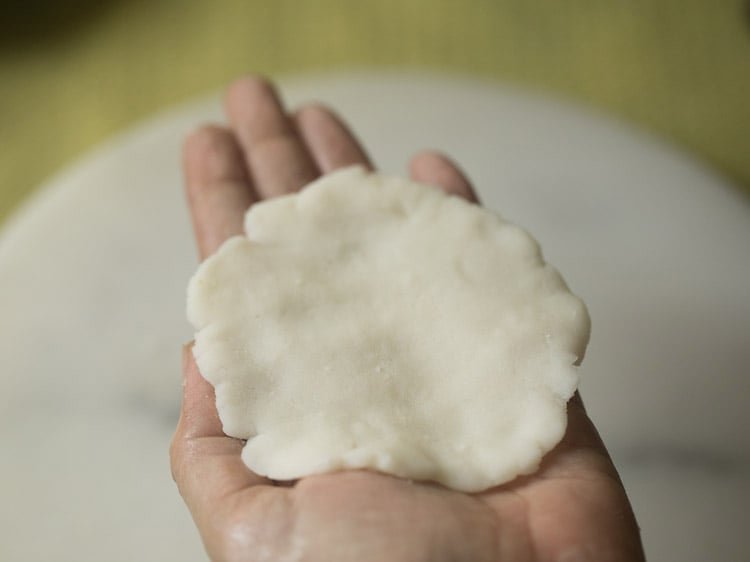
21. Place the flattened dough on a plate or on a tray.
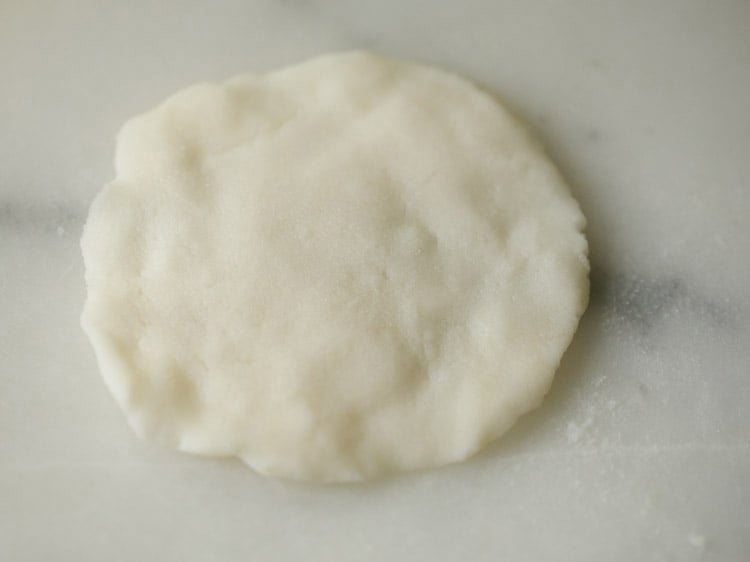
22. Place the coconut-jaggery stuffing in the center.
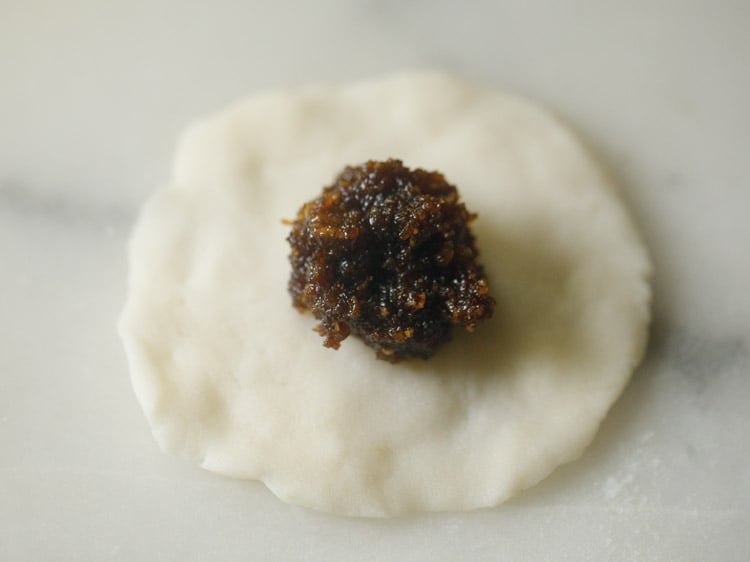
23. Making small pleats, bring the sides in the center, press and join them. The way it is done for stuffed parathas.
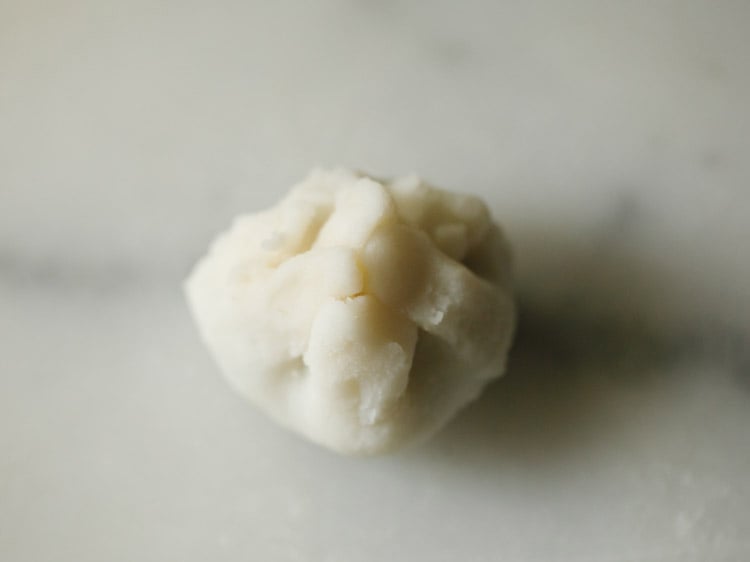
24. Then, gently roll the Kozhukattai to get a neat round shape. This way you can make round shaped Kozhukattai.
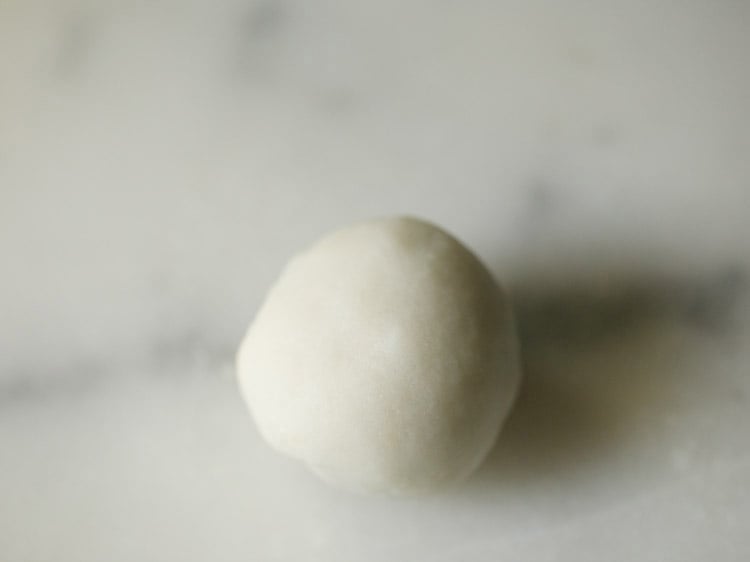
Shaping Kozhukattai With A Mould
25. Grease the Kozhukattai mould with some ghee or oil. Then, close or lock the mould.
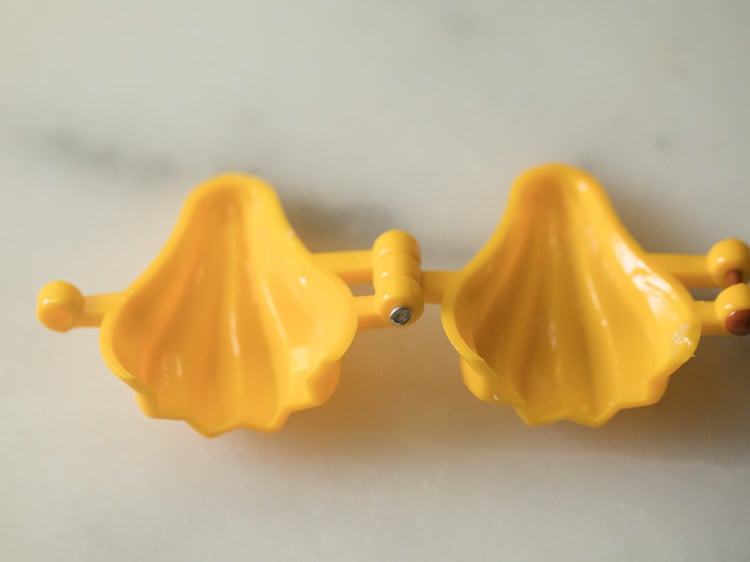
26. Put the dough ball in the cavity of the mould.
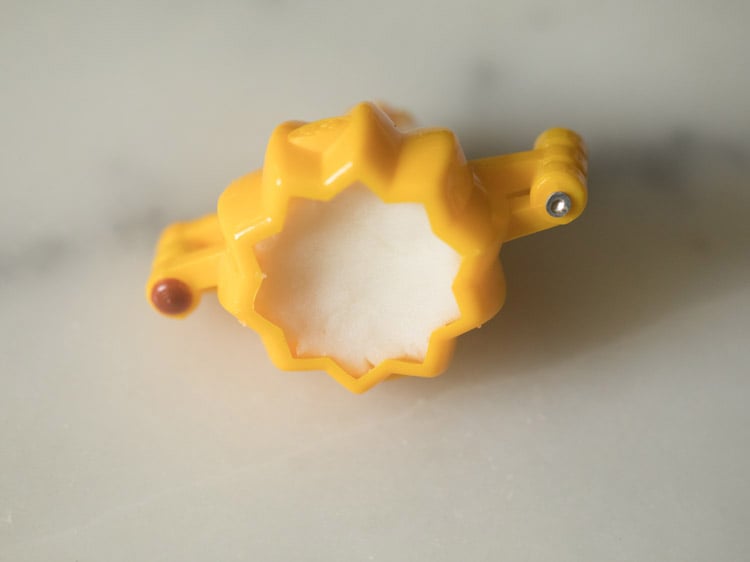
27. Press the dough along the surface of the mould, so that a space is made.
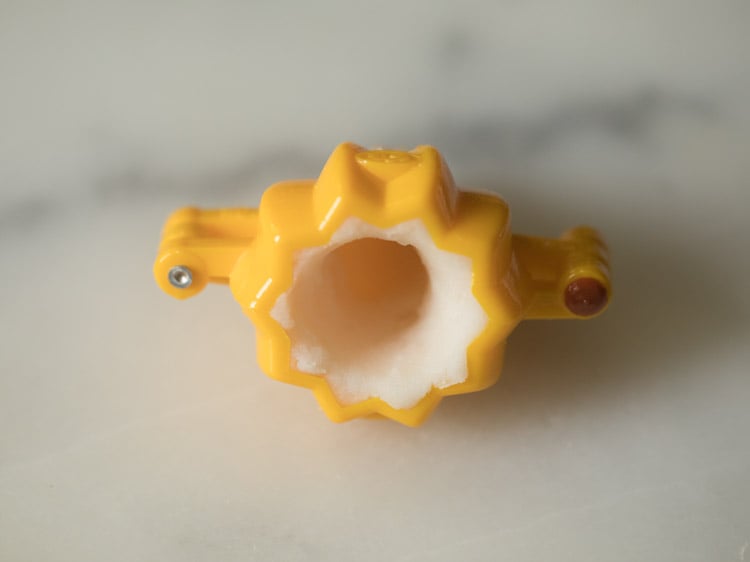
28. Add the coconut-jaggery stuffing in the space created.
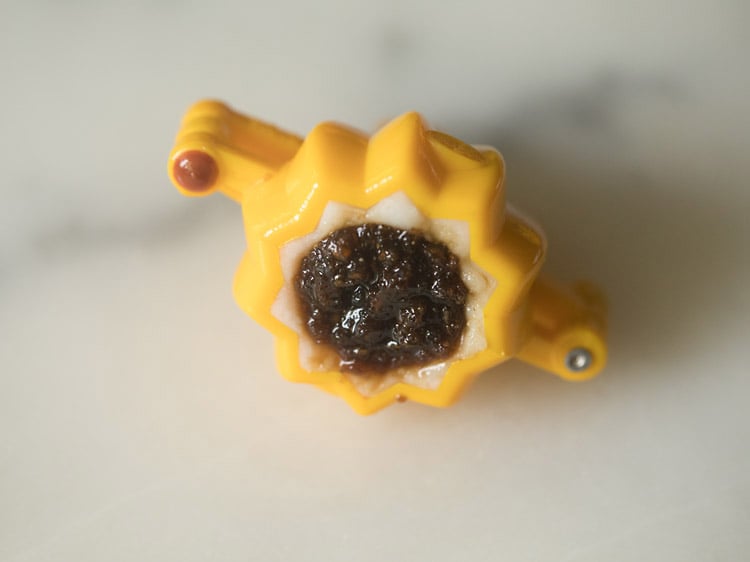
29. Cover with small piece of dough on top. Press to even it and seal the Kozhukattai.
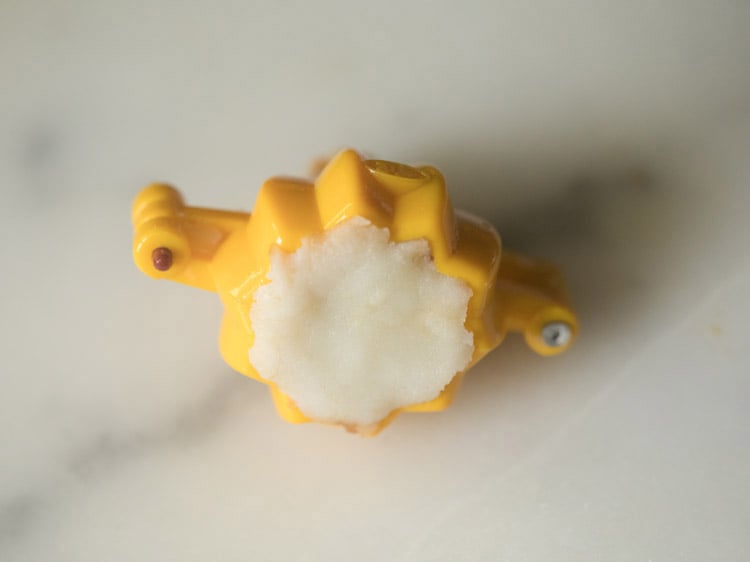
30. Gently open or unlock the mould. Carefully remove the Kozhukattai from the mould. Prepare all the Kozhukattai this way using the mould.
Alternatively, you can also flatten the ball. Then, place the coconut-jaggery filling in the center. Make small pleats and bring all the edges together and then join.
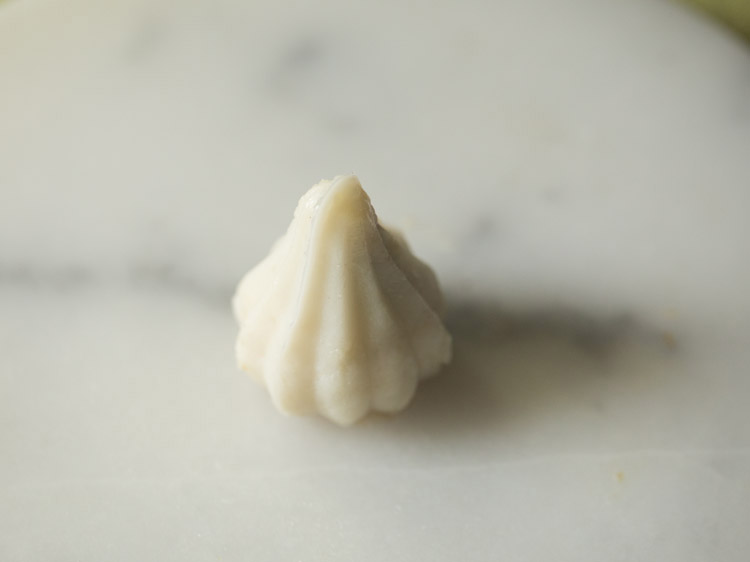
Steam Kolukattai
31. Take a pan and grease it with ghee or oil. You can even line the pan with banana leaves or turmeric leaves. I have used turmeric leaves as they impart a lovely aroma to these sweets.
Place the prepared Kolukattai on the leaves in the pan or in the greased pan keeping some space around them.
I stacked 2 pans on top of each other and steamed 15 pieces. You can also steam in batches. Cover with a moist muslin or cotton napkin before you begin to steam.
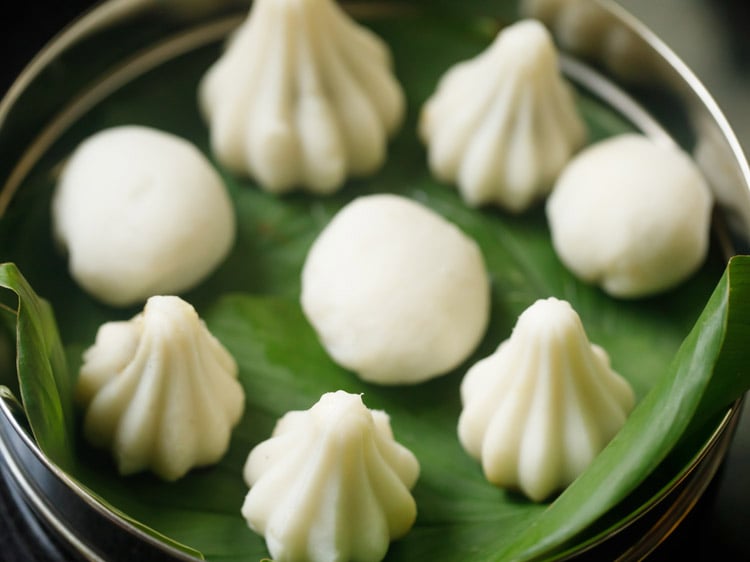
32. In a large pot, place a stand or rack. Add 2.5 cups water.
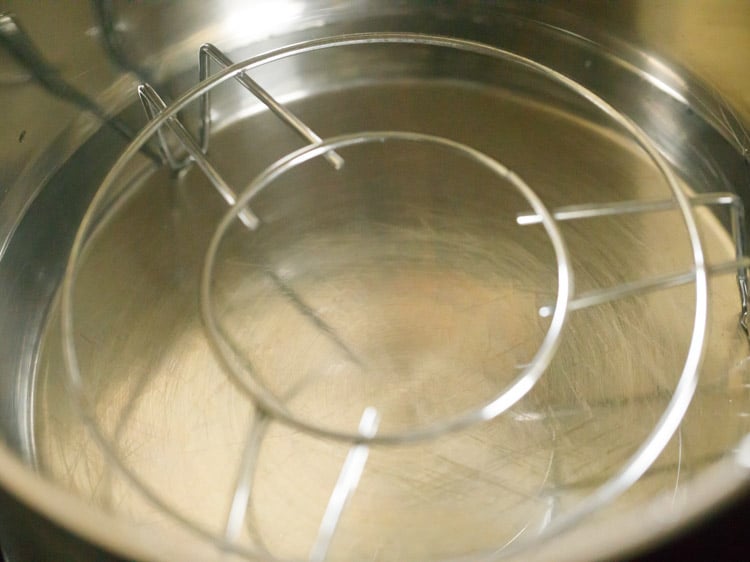
33. Let the water come to a boil.
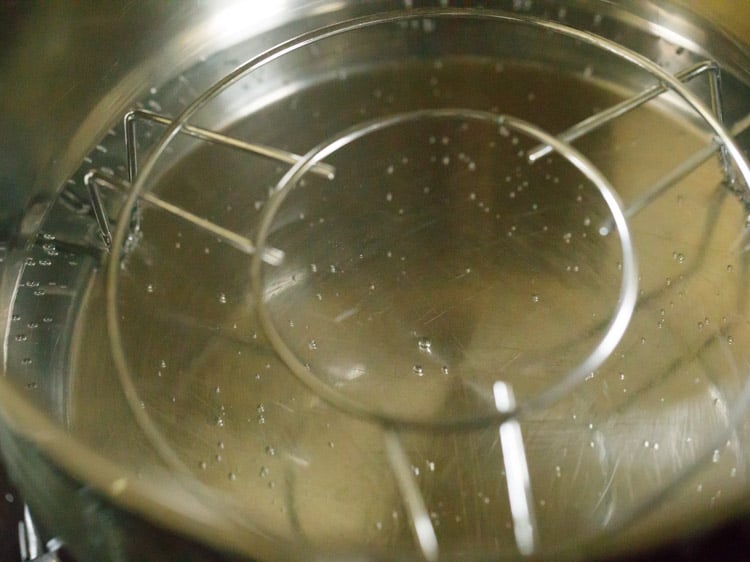
34. With the help of tongs, carefully keep the pans containing Kozhukattai in the pan.
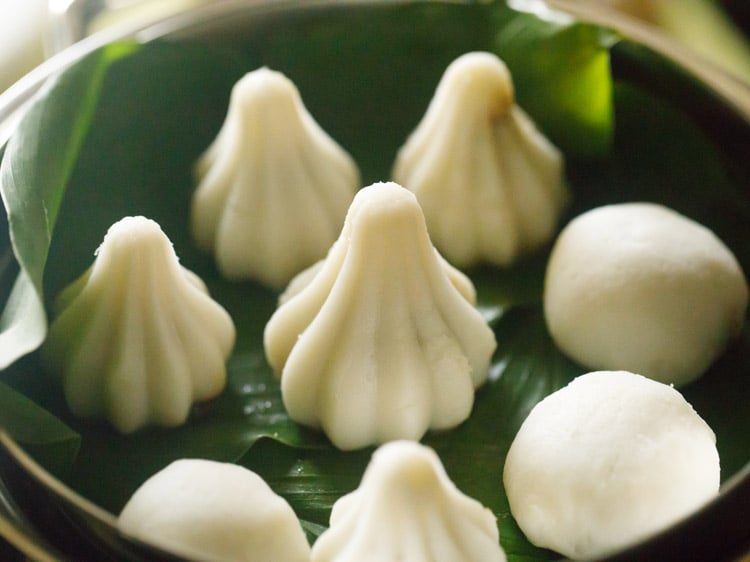
35. Cover the pot with a lid.
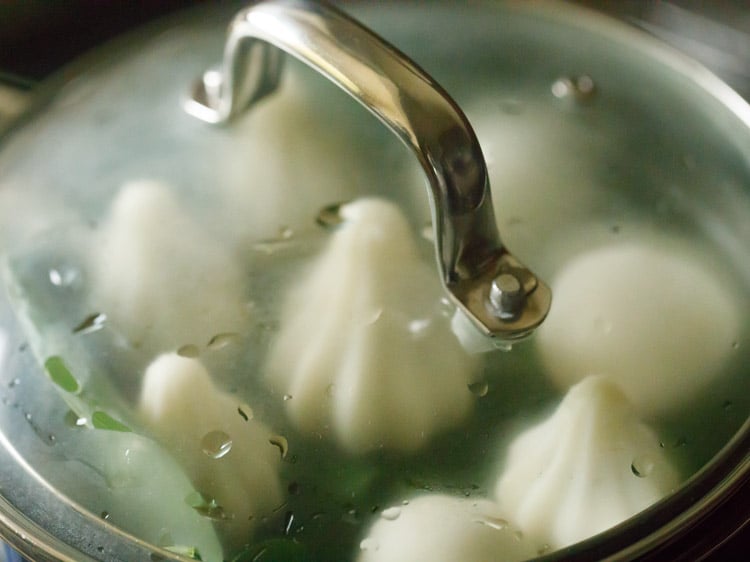
36. Steam for 10 to 15 minutes on medium-low or medium heat.
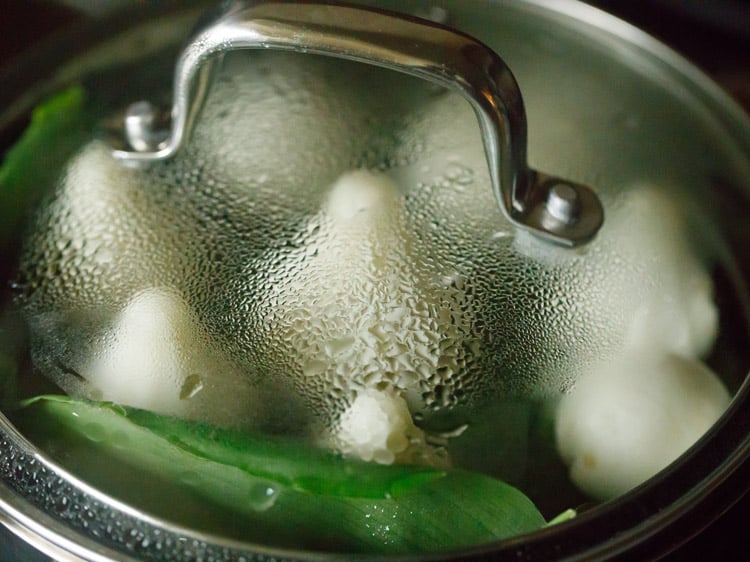
37. Then, remove the lid.
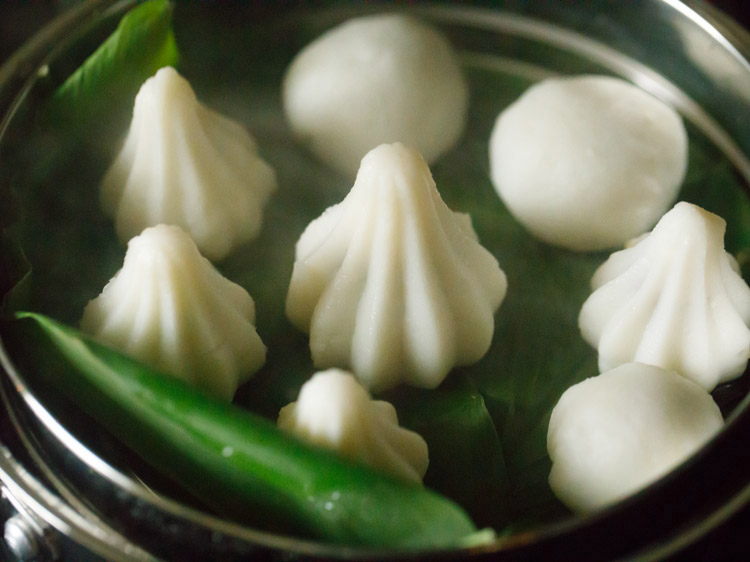
38. Using tongs, carefully remove the pans from the pot.
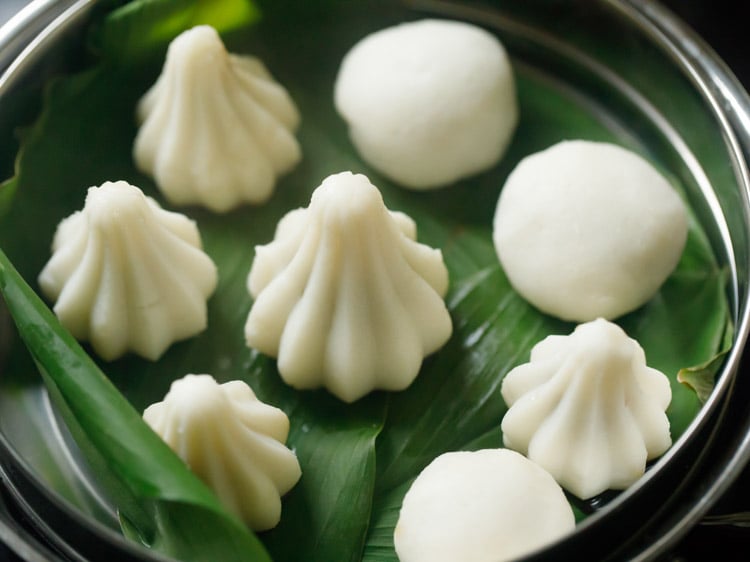
39. Let them turn warm. Then, offer Kozhukattai to Lord Ganesha. You can drizzle some ghee on them before offering to the deity.
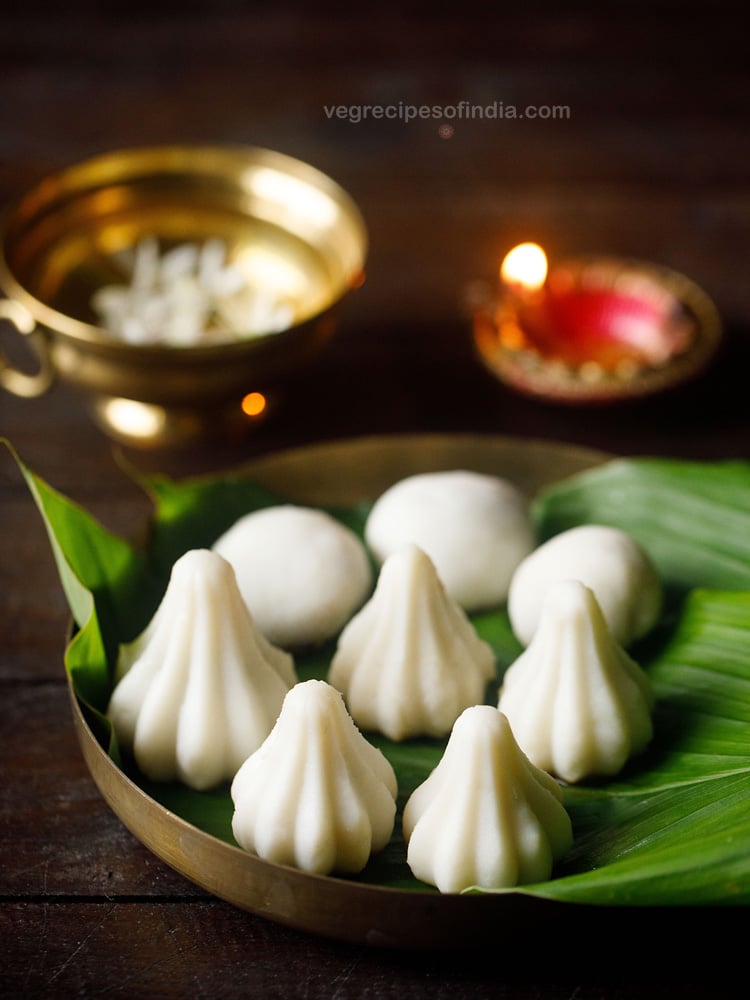
Expert Tips
- First and foremost, avoid tasting the Kozhukattai whenever making for Vinayaka Chaturthi or any other festival.
- You can either use grated jaggery or jaggery powder for the filling of this Kolukattai recipe. Best results are achieved by using fresh ingredients and preparing the sweet with a devotional heart and soul.
- You have to cook the jaggery mixture till it begins to dry. However, make sure not to overcook as then the jaggery hardens. If you have excess moisture in the filling, add some rice flour as it helps to absorb the moisture.
- While making the rice dough balls, make sure they are smooth. If some of them get cracks, rub some water on your palm and then shape again into balls. You will get rid of the cracks this way.
- While steaming, you can even line your pan with banana leaves or turmeric leaves. I usually use turmeric leaves as they impart a lovely fragrance to the sweets.
- Just like modak, you can even add some seeds and nuts in the filling for an enhanced flavor. But I’d say keep it as it is meant to be, as that is when it will be unique and different.
- To make it a faster process, I would suggest using a mould to shape these sweets. However, if you have time and are a pro in using your hands, go ahead with it.
More Ganesh Chaturthi Recipes To Try!
Sweets Recipes
Sweets Recipes
Ladoo Recipes
Ladoo Recipes
Please be sure to rate the recipe in the recipe card or leave a comment below if you have made it. For more vegetarian inspirations, Sign Up for my emails or follow me on Instagram, Youtube, Facebook, Pinterest or Twitter.
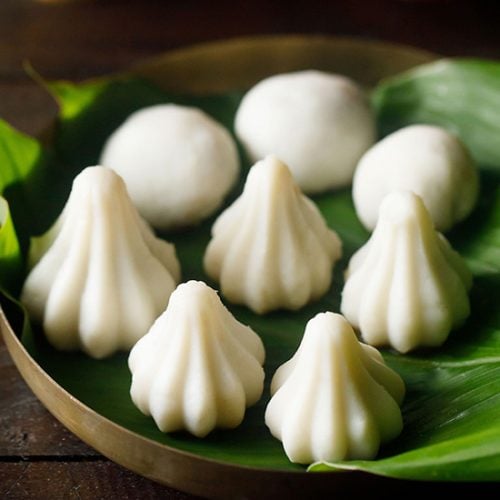
Kozhukattai Recipe | How To Make Kolukattai
Ingredients
For the sweet coconut and jaggery stuffing
- 1.5 cups grated fresh coconut
- 1 cup jaggery or 150 grams
- ½ teaspoon cardamom powder
- ½ teaspoon ghee or oil
For the rice dough
- 1.5 cups water
- ¼ teaspoon ghee or oil
- ¼ teaspoon salt or add as required
- 1 cup Rice Flour or 125 grams
Instructions
Preparing sweet coconut and jaggery stuffing
- In a heavy kadai take 1.5 cups grated fresh coconut and 1 cup jaggery powder or grated jaggery.
- Keep kadai on a medium-low heat. Mix the coconut with the jaggery.
- Then add ½ teaspoon ghee or oil.
- Stir often and cook this coconut and jaggery mixture on a low to medium-low heat. the jaggery will begin to melt first.
- Continue to cook stirring often.
- Add ½ teaspoon cardamom powder and mix well.
- Cook this mixture till the moisture from the jaggery begins to dry. Then switch off the heat. Do not overcook as then the jaggery will harden.
- Keep this coconut-jaggery filling aside to cool. On cooling the mixture will thicken more.
- To get rid of any excess moisture in the filling, you can add a bit of rice flour. Adding rice flour helps to absorb moisture, if any from the filling.
Preparing rice dough
- In another kadai or pan take 1.5 cups of water. Add ¼ teaspoon ghee or oil. Place the pan on a stove top on a medium to high heat.
- Add ¼ teaspoon salt.
- Let the water come to a rolling boil.
- Reduce the heat to a low and then add 1 cup rice flour gradually.
- Quickly begin to stir and mix all of the rice flour with water.
- Stir till all the rice flour is mixed with the water. Mix very well and switch off the heat.
- Keep the pan down on the kitchen tabletop. Cover the pan with a lid and keep for 4 to 5 minutes.
- After 4 to 5 minutes remove the lid. Check the hotness of the rice dough by touching it with clean fingers.
- If the dough is warm or slightly hot, then begin to knead it. Though take care not to burn your fingers. You can also place the dough in a tray or a plate and then knead.
- Knead to a smooth and soft dough. Then cover the dough with a damp muslin or cotton cloth. Now allow the dough to rest for 10 to 12 minutes.
- Then make small balls from the dough. The rice dough balls should be smooth. Some may get cracks, so just rub a bit of water on your palm and shape them into balls again which will get rid of the cracks.
Assembling and stuffing the sweet kozhukattai
Method 1 – Making round kozhukattai
- Take the dough ball and gently flatten it with your fingers. Keep the edges thin and the center slightly thick.
- Place the flattened dough on a plate or on a tray.
- Place the coconut & jaggery stuffing in the center.
- Making small pleats, bring the sides in the center and then press and join them – the way its done for stuffed parathas.
- Then gently roll the kozhukattai to get a neat round shape. This way you can make round shaped kozhukattais.
Method 2 – Making kolukattai with mould
- Grease the kozhukattai mould with a bit of ghee or oil. Then close or lock the mould.
- Put the dough ball in the cavity of the mould.
- Press the dough along the surface of the mould, so that a cavity or space is made. add the coconut & jaggery stuffing.
- Then cover with small piece of dough on top. Press to even it and seal the kozhukattai.
- Now gently open or unlock the mould. Carefully remove the kozhukattai from the mould.
- Alternatively you can also flatten the ball. Then place the coconut filling in the center. Make small pleats and bring all the edges together and then join. Prepare all the kozhukattai this way using the kozhukattai mould.
Steaming kozhukattai
- Then take pan and grease it with ghee or oil. You can even line the pan with banana leaves or turmeric leaves.
- If you have a large pan then place all the prepared dumplings on it without them touching each other. If using a medium-sized pan, place half of the dumplings in each of the two pans. Make sure there is some space between dumplings in the pan. Stack these two pans on top of each other.
- You can also steam in batches. Cover them with a moist muslin or cotton napkin before you begin to steam.
- In a large pot place a stand or rack. Add 2.5 cups of water.
- Let the water come to a boil.
- With the help of tongs, then keep the pans containing kozhukattai in the pan.
- Cover the pan with a lid.
- Steam for 10 to 15 minutes on a medium-low or medium heat. Then remove the lid.
- Using tongs, carefully remove the pans from the pot.
- Let the kozhukattai become warm. Then offer them to Bhagwan Ganesha. You can drizzle some ghee on the kozhukattai before offering to the deity.
Notes
- When making Kolukattai for Ganesh Chaturthi or any festival, avoid tasting them while making.
- Feel free to use either the regular block of jaggery or jaggery powder to make the sweet filling.
- Make sure that all your ingredients are fresh and within their expiry dates.
- If the sweet coconut and jaggery stuffing looks moist, add some rice flour as it helps to absorb any moisture.
- While making the rice dough balls, make sure they are smooth. If they have fine cracks, gently rub a few drops of water on your palm and then shape again into balls. This way you will get rid of the cracks.
- Scale the recipe easily to make a small or large batch.
Nutrition Info (Approximate Values)
This Kozhukattai recipe post from the blog archives first published in September 2018 has been updated and republished on August 2022.
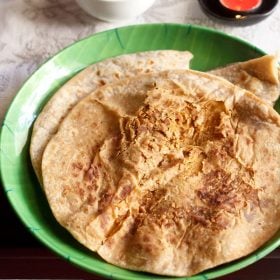
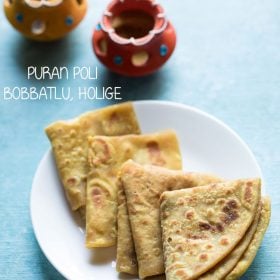
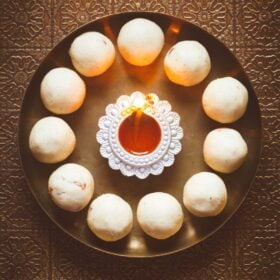
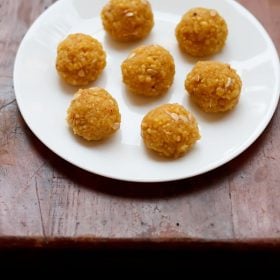
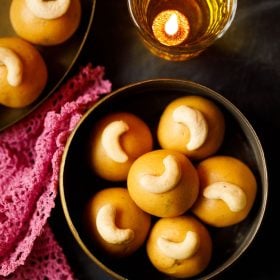
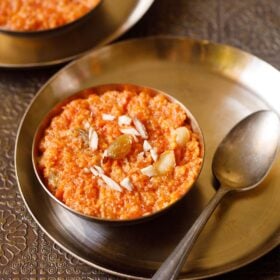
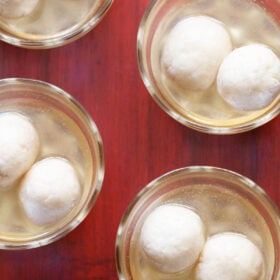
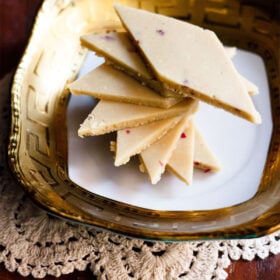








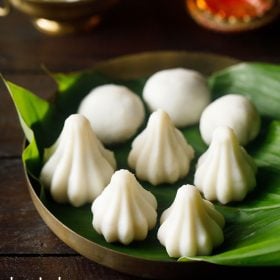
Followed to the dot, it came out brilliant even for the first attempt. Thank you 🙂
Thank you for the lovely feedback.
Great…Thank you..
Most welcome.
Followed your instruction but rice flour mix is very glutinous. Not able to knead it to a big ball.
Glutinous is due to the quality of rice flour. Usually the rice flour that we buy in Indian markets or make at home is not glutinous. I think there is nothing you can do here.
Came out awesome for the first itself
Thank you and great to know. Thanks for the rating too.
It came out well without breaking. Happy me
Great and thanks for sharing. Happy Vinayaka Chaturthi!
Well explained thanks
thanks and welcome.
My batter was breaking… What did i do wrong
looks like water is less. add some water and knead again.
Hi,
Your all the recipes and Festival recipes are too good, expecting more recipes for Diwali.
thanks arivu. i will only be able to add a couple of recipes for diwali as i am doing a lot of backend work on the website. planning to get it done before diwali, but its taking more time.